By Robert St. Patrick
 Los Angeles, CA (The Hollywood Times) 7/12/23 – Master documentarian Jeffrey Schwartz, with his deep knowledge of Hollywood and the movie industry, has a new film worth seeing Commitment to Life (2023), which documents the decades-long fight against HIV/AIDS in Los Angeles. Where David France’s How to Survive A Plague (2012) focused on the US East Coast and the work of activists in New York City with ACT UP, this documentary, looks at how the disease emerged on the West Coast and the origin of APLA (AIDS Project Los Angeles) emerged to support the sick and lobby for a cure. The two parts of the county are culturally very different and so are the two films. Where New Yorkers turned to legal and academic tradition to develop their own skills and take practical action, Californians looked to their most obvious asset: Hollywood. For those who have lived through the 40 years of the AIDS epidemic, this film is a moving survey of the milestones in the history of the disease and the work of APLA to disseminate information and provide care for those affected, as well as lobbying for better treatment.
Los Angeles, CA (The Hollywood Times) 7/12/23 – Master documentarian Jeffrey Schwartz, with his deep knowledge of Hollywood and the movie industry, has a new film worth seeing Commitment to Life (2023), which documents the decades-long fight against HIV/AIDS in Los Angeles. Where David France’s How to Survive A Plague (2012) focused on the US East Coast and the work of activists in New York City with ACT UP, this documentary, looks at how the disease emerged on the West Coast and the origin of APLA (AIDS Project Los Angeles) emerged to support the sick and lobby for a cure. The two parts of the county are culturally very different and so are the two films. Where New Yorkers turned to legal and academic tradition to develop their own skills and take practical action, Californians looked to their most obvious asset: Hollywood. For those who have lived through the 40 years of the AIDS epidemic, this film is a moving survey of the milestones in the history of the disease and the work of APLA to disseminate information and provide care for those affected, as well as lobbying for better treatment.
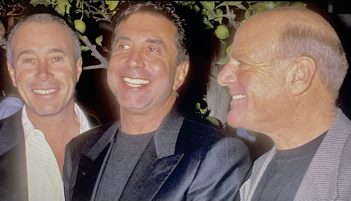 Jeffrey Schwarz provides a much needed and balanced narrative about HIV/AIDS in Los Angeles. From the very start of the film, he foregrounds Black voices, and there is a section focused on the different way in which the epidemic affected Black people, who mostly inhabited different social spaces and were missed by some of the early information campaigns, thinking of AIDS as a white gay men’s disease until it was too late. Jewel Thais-Williams, owner of the legendary Catch One nightclub, makes a valuable witness, going on to discuss many additional aspects of what followed. The film has three chapters, so to speak. The first is the emergence of the disease on the West Coast and the panic it caused in the gay community.
Jeffrey Schwarz provides a much needed and balanced narrative about HIV/AIDS in Los Angeles. From the very start of the film, he foregrounds Black voices, and there is a section focused on the different way in which the epidemic affected Black people, who mostly inhabited different social spaces and were missed by some of the early information campaigns, thinking of AIDS as a white gay men’s disease until it was too late. Jewel Thais-Williams, owner of the legendary Catch One nightclub, makes a valuable witness, going on to discuss many additional aspects of what followed. The film has three chapters, so to speak. The first is the emergence of the disease on the West Coast and the panic it caused in the gay community.
 Here we are told about the rise of APLA as an organization which, with little funding and huge volunteer effort, attempted to spread vital information about the disease and how to avoid it if possible. From APLA also came programs for supporting those sick with AIDS, not only with basic necessities but also emotional support in their suffering. The film begins by addressing the early history of the outbreak, with some of the few survivors, plus nurses and those who lost loved ones, sharing their stories.
Here we are told about the rise of APLA as an organization which, with little funding and huge volunteer effort, attempted to spread vital information about the disease and how to avoid it if possible. From APLA also came programs for supporting those sick with AIDS, not only with basic necessities but also emotional support in their suffering. The film begins by addressing the early history of the outbreak, with some of the few survivors, plus nurses and those who lost loved ones, sharing their stories.
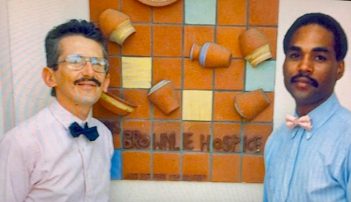 There’s also an extensive focus on AIDS Project Los Angeles and the vital work done through its AIDS hotline even before very much was known about the virus. In October 1982, the four founders of AIDS Project Los Angeles (APLA) – Nancy Cole Sawaya, Matt Redman, Ervin Munro, and Max Drew – attended an emergency meeting at the Los Angeles Gay and Lesbian Community Services Center. The meeting featured a presentation by a representative from San Francisco’s Kaposi’s Sarcoma Foundation about Gay-Related Immune Deficiency (GRID), one of the early names for AIDS. The early work of APLA is put into perspective by reflection on the weekly memorial services held for staff, around a third of whom died during its first year of operation. This was in a time when it was difficult to get people with AIDS accepted by hospitals or even, after their deaths, by mortuaries. The systems which activists came up with to provide support are inspirational not just emotionally, but as a practical model for handling crisis situations.
There’s also an extensive focus on AIDS Project Los Angeles and the vital work done through its AIDS hotline even before very much was known about the virus. In October 1982, the four founders of AIDS Project Los Angeles (APLA) – Nancy Cole Sawaya, Matt Redman, Ervin Munro, and Max Drew – attended an emergency meeting at the Los Angeles Gay and Lesbian Community Services Center. The meeting featured a presentation by a representative from San Francisco’s Kaposi’s Sarcoma Foundation about Gay-Related Immune Deficiency (GRID), one of the early names for AIDS. The early work of APLA is put into perspective by reflection on the weekly memorial services held for staff, around a third of whom died during its first year of operation. This was in a time when it was difficult to get people with AIDS accepted by hospitals or even, after their deaths, by mortuaries. The systems which activists came up with to provide support are inspirational not just emotionally, but as a practical model for handling crisis situations.
 The second part of Schwartz’s documentary begins with the need for money for APLA. An early fundraiser at Studio One in March 1984, featuring Joan Rivers, raised $45,000 for APLA, L.A. Shanti, and Aid for AIDS. Since then, volunteers from many communities have produced hundreds of successful fundraising events. Throughout its history, APLA has raised money through events including Commitment to Life, Dance-athon, Focus on AIDS, Summer PartyTM, Toy Box, fashion events, The Concert: 20 Years of AIDS, The Envelope Please: An Oscar® Viewing Party, The Southland Theatre Artists Goodwill Event (S.T.A.G.E.), A Thanksgiving Moment, Art Project Los Angeles, and countless other grassroots events.
The second part of Schwartz’s documentary begins with the need for money for APLA. An early fundraiser at Studio One in March 1984, featuring Joan Rivers, raised $45,000 for APLA, L.A. Shanti, and Aid for AIDS. Since then, volunteers from many communities have produced hundreds of successful fundraising events. Throughout its history, APLA has raised money through events including Commitment to Life, Dance-athon, Focus on AIDS, Summer PartyTM, Toy Box, fashion events, The Concert: 20 Years of AIDS, The Envelope Please: An Oscar® Viewing Party, The Southland Theatre Artists Goodwill Event (S.T.A.G.E.), A Thanksgiving Moment, Art Project Los Angeles, and countless other grassroots events.
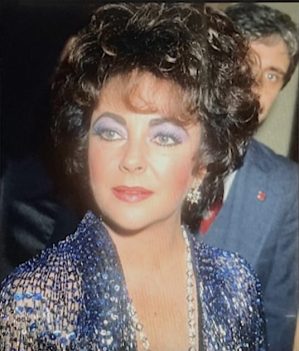 It is salient that the death of actor Rock Hudson from AIDS in 1985 changed the game plan. Because Elizabeth Taylor was a good friend of Rock Hudson from her film career, she was recruited to head up the cause for fighting the sigma of AIDS in the homosexual community and in Hollywood. Male celebrities were quite reluctant to say anything because they did not wish to give the public any room to question their dominant heterosexual image. So, it was Elizabeth Taylor, who had a flagging career at that point, who stepped forward to become the voice of compassion for HIV/AIDS victims. From this was born the first of series of “Commitment to Life” fund-raising dinner for financial support of APLA. Soon this “Commitment to Life” annual event blossomed in a huge entertainment event that that attracted some of the more affluent producers and movie moguls in Hollywood.
It is salient that the death of actor Rock Hudson from AIDS in 1985 changed the game plan. Because Elizabeth Taylor was a good friend of Rock Hudson from her film career, she was recruited to head up the cause for fighting the sigma of AIDS in the homosexual community and in Hollywood. Male celebrities were quite reluctant to say anything because they did not wish to give the public any room to question their dominant heterosexual image. So, it was Elizabeth Taylor, who had a flagging career at that point, who stepped forward to become the voice of compassion for HIV/AIDS victims. From this was born the first of series of “Commitment to Life” fund-raising dinner for financial support of APLA. Soon this “Commitment to Life” annual event blossomed in a huge entertainment event that that attracted some of the more affluent producers and movie moguls in Hollywood.
 In the film, we hear how Matt Redman and David Wexler, former APLA Board members, decided to use a business model to get celebrities to use their clout in order to raise awareness and much needed funds. Minister Steve Pieters, who appears several times in the film with his own story, revisits his landmark interview with televangelist Tammy Faye Bakker. Fans and celebs recall the breakthrough of Rock Hudson disclosing his affliction with the disease. Meanwhile, Susan Bluestein, widow of Midnight Express star Brad Davis, shares the painful memory of her husband concealing his illness due to fear. Another benchmark was the admission of L.A. Lakers basketball star Magic Johnson who admission of being HIV sent strong signals beyond just the gay community. On the other hand, stars like Madonna, Bette Midler, and especially Elizabeth Taylor used their clout to sway the public and pressure then-President Reagan to acknowledge the existence of AIDS, despite the antithetic attitude of his wife Nancy.
In the film, we hear how Matt Redman and David Wexler, former APLA Board members, decided to use a business model to get celebrities to use their clout in order to raise awareness and much needed funds. Minister Steve Pieters, who appears several times in the film with his own story, revisits his landmark interview with televangelist Tammy Faye Bakker. Fans and celebs recall the breakthrough of Rock Hudson disclosing his affliction with the disease. Meanwhile, Susan Bluestein, widow of Midnight Express star Brad Davis, shares the painful memory of her husband concealing his illness due to fear. Another benchmark was the admission of L.A. Lakers basketball star Magic Johnson who admission of being HIV sent strong signals beyond just the gay community. On the other hand, stars like Madonna, Bette Midler, and especially Elizabeth Taylor used their clout to sway the public and pressure then-President Reagan to acknowledge the existence of AIDS, despite the antithetic attitude of his wife Nancy.
 We are reminded of the support of other celebrities like Joan Rivers and Madonna gave to this huge fund-raising event “Commitment to Life.” Along with movie studio heads, media mogul David Geffen, outed himself in public before going on to provide campaigners with a financial lifeline. Schwarz does a good job of conveying the risks these people took and what a vital difference it made. Clearly, the “star” of the second part of the film is Elizabeth Taylor, whose compassionate voice offered hope and swayed celebrities to give money to the cause represented by APLA, to fight the negativity of political conservatives around Reagan and to reach out to those sick and dying from AIDS.
We are reminded of the support of other celebrities like Joan Rivers and Madonna gave to this huge fund-raising event “Commitment to Life.” Along with movie studio heads, media mogul David Geffen, outed himself in public before going on to provide campaigners with a financial lifeline. Schwarz does a good job of conveying the risks these people took and what a vital difference it made. Clearly, the “star” of the second part of the film is Elizabeth Taylor, whose compassionate voice offered hope and swayed celebrities to give money to the cause represented by APLA, to fight the negativity of political conservatives around Reagan and to reach out to those sick and dying from AIDS.
 There are some powerful personal stories woven through the fabric of Commitment to Life, to the reinforce the important point affirmed by APLA is that HIV does not have to be a death sentence, but that one can live with HIV, with proper drug regimen. The big change occurred in 1995, with the advent of anti-retroviral drugs and eventually the HIV cocktail that could reduce the virus to undetectability. This is important, but the film also chastens us to understand that a quarter of people living with HIV today can’t access anti-retroviral therapy. Younger gay men have access to PrEP, which is also an HIV medicine, but seems to be highly effective in preventing HIV infection in the first place.
There are some powerful personal stories woven through the fabric of Commitment to Life, to the reinforce the important point affirmed by APLA is that HIV does not have to be a death sentence, but that one can live with HIV, with proper drug regimen. The big change occurred in 1995, with the advent of anti-retroviral drugs and eventually the HIV cocktail that could reduce the virus to undetectability. This is important, but the film also chastens us to understand that a quarter of people living with HIV today can’t access anti-retroviral therapy. Younger gay men have access to PrEP, which is also an HIV medicine, but seems to be highly effective in preventing HIV infection in the first place.
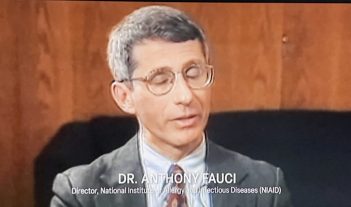 Persons who are interviewed in the film include Jewel Thais-Williams, Co-founder, Minority AIDS Project, Bruce Vilanch, Writer and Comedian, Torie Osborn, Former Executive Director, National Gay and Lesbian Task Force, Dr. Michael Gottlieb, Physician and Former APLA Board Member, Dr. Anthony Fauci, former Director of the National Institute of Allergy and Infectious Diseases, and Steve Pieters, Former Field Director of AIDS Ministry. I was particularly moved by the words of Phill Wilson who, when he and his partner Chris Brownlie were faced with their own HIV diagnosis, became full time activists, and helped defeat the notorious Prop 64 in 1984, which would have placed people with HIV in internment camps.
Persons who are interviewed in the film include Jewel Thais-Williams, Co-founder, Minority AIDS Project, Bruce Vilanch, Writer and Comedian, Torie Osborn, Former Executive Director, National Gay and Lesbian Task Force, Dr. Michael Gottlieb, Physician and Former APLA Board Member, Dr. Anthony Fauci, former Director of the National Institute of Allergy and Infectious Diseases, and Steve Pieters, Former Field Director of AIDS Ministry. I was particularly moved by the words of Phill Wilson who, when he and his partner Chris Brownlie were faced with their own HIV diagnosis, became full time activists, and helped defeat the notorious Prop 64 in 1984, which would have placed people with HIV in internment camps.
 In the third chapter of the film, we learn how the work of APLA changed from hospice care to the need for more comprehensive health care for those with AIDS and those living with HIV. Throughout the Los Angeles area, HIV health centers and dental clinics began to open – not just in Hollywood but across the Southland. In response to the needs of non-white communities, these health centers address the needs of many non-LGBTQ persons in need of medical and dental services – because of government support. An APLA Health Center in Baldwin Park is an example of one of these in a predominantly Latino suburb and we have a cameo of the wonderful Latino transgender activist and community organizer Bamby Salcedo, currently President of the TransLatin Coalitio, as a voice of a hope for a meaningful life with HIV.
In the third chapter of the film, we learn how the work of APLA changed from hospice care to the need for more comprehensive health care for those with AIDS and those living with HIV. Throughout the Los Angeles area, HIV health centers and dental clinics began to open – not just in Hollywood but across the Southland. In response to the needs of non-white communities, these health centers address the needs of many non-LGBTQ persons in need of medical and dental services – because of government support. An APLA Health Center in Baldwin Park is an example of one of these in a predominantly Latino suburb and we have a cameo of the wonderful Latino transgender activist and community organizer Bamby Salcedo, currently President of the TransLatin Coalitio, as a voice of a hope for a meaningful life with HIV.
 Ultimately, Schwartz’ meandering narrative, chock-full of talking heads and celebrities, is a fine record of the APLA story, but also a great reminder of the good work that Hollywood’s finest have done for the LGBTQ+ community. When a society like our tends to scoff at the vulnerable, it is so important that those in the entertainment industry can re-shape public opinion about what it means to be queer and vulnerable and struggling with a disease like HIV/AIDS. As is pointed out in the film: The activism and money that Hollywood has generated to fight AIDS also led the success of the fight for marriage equality. After 40 years, the LGBTQ+ community has much to celebrate, despite the detractors and their noisy voices. That is why the film Commitment to Life should encourage us not to let up our guard but to continue to fight for what is best and just.
Ultimately, Schwartz’ meandering narrative, chock-full of talking heads and celebrities, is a fine record of the APLA story, but also a great reminder of the good work that Hollywood’s finest have done for the LGBTQ+ community. When a society like our tends to scoff at the vulnerable, it is so important that those in the entertainment industry can re-shape public opinion about what it means to be queer and vulnerable and struggling with a disease like HIV/AIDS. As is pointed out in the film: The activism and money that Hollywood has generated to fight AIDS also led the success of the fight for marriage equality. After 40 years, the LGBTQ+ community has much to celebrate, despite the detractors and their noisy voices. That is why the film Commitment to Life should encourage us not to let up our guard but to continue to fight for what is best and just.
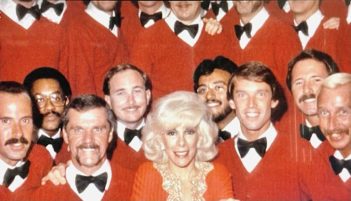 Commitment to Life screens on Saturday, July 15, at 4:15 PM @ the Directors Guild of America, Theater 1. If you wish to see the film and cannot make to the theatrical screening, consider watching it via Outfest Streaming online, available beginning July 17 through July 23. For tickets to either viewing opportunity, go to: www.outfestla.org
Commitment to Life screens on Saturday, July 15, at 4:15 PM @ the Directors Guild of America, Theater 1. If you wish to see the film and cannot make to the theatrical screening, consider watching it via Outfest Streaming online, available beginning July 17 through July 23. For tickets to either viewing opportunity, go to: www.outfestla.org




